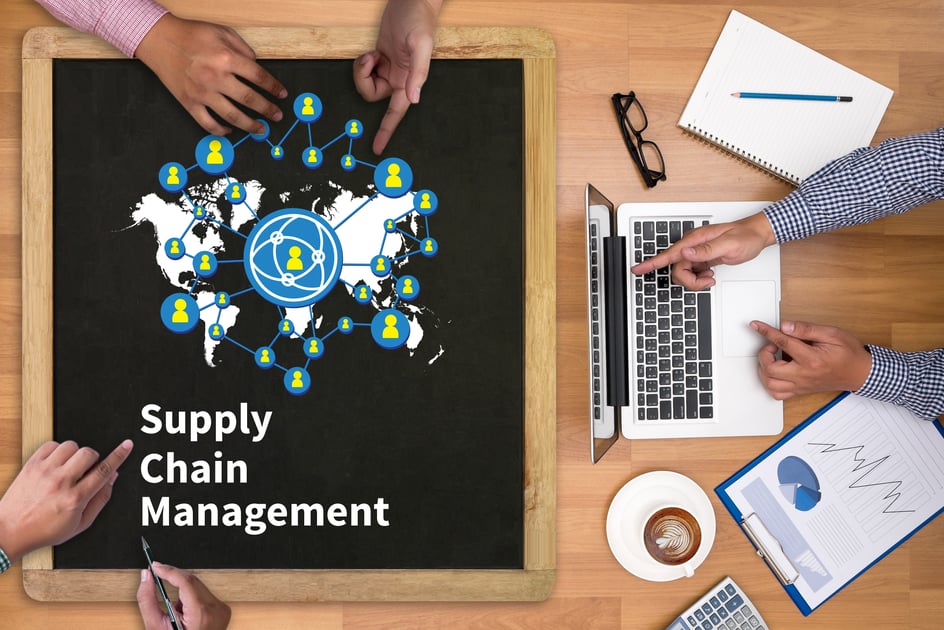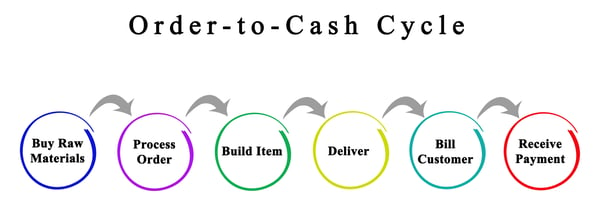
Inbound Freight Management Services: Top 10 Benefits & Why Often Overlooked
January 21, 2019 •Rick LaGore

Year after year, logistics teams are tasked to reduce their freight spend and improve the supply chain performance of the company. But time and again, inbound freight management is not identified as an opportunity. This oversight continues to have those in the logistics and supply chain industry scratching their heads as to why, because according to the Aberdeen Group, inbound freight can consume 40% of an average organization’s annual freight spend or 3.6% to 5.2% of a firm’s total annual sales.
Reasons Why Inbound Freight is an Often Overlooked or Lower Priority Logistics Savings Opportunity
-
Inbound freight is hidden in the purchase price of goods bought by a company because they buy their goods with prepay-and-add freight terms.
-
Inbound is often managed by the purchasing department because of their vendor relationships and possible silo corporate structure.
-
Vendors do not want companies to manage their inbound freight because it is a profit center and it does change their operations when they do not control all the freight on their docks.
-
It can be difficult to start an inbound program because of the lack of visibility and the process to break out the inbound freight costs from the landed purchase price often require purchasing negotiations to split the cost of the product and freight out of the price of the product. Adding to this difficulty are possible communication shortcomings between the procurement and logistics teams.
-
The process of managing all the requirements can be cumbersome without set processes and the technology to support.
While the above issues can be overcome, they are well worth the efforts to unlock tremendous benefits lay dormant.
Top 10 Benefits of Inbound Freight Management
- Reduce Freight Costs
- Improved Supply Chain KPIs
- Better Resource Management
- Shorten the Order-to-Cash Cycle
- Capital Preservation
- Vendor Relationship & Management
- Improved Dock Management
- Improves Reliability Across the Supply Chain
- Creates an Atmosphere of Accountability
- Positive & Proactive Communication for Internal & External Supply Chain Stakeholders
Benefits by Managing Inbound Freight
As mentioned earlier, the benefits to a company that manages their inbound freight process is more than just reducing the cost of freight and improving transits, so it’s worth stepping through each area of improvement in detail.
1. Reduced Freight Costs
Let’s hit the most obvious first, which is freight cost savings. By getting off the prepaid-and-add profit center companies have fine-tuned over the years, shippers can save themselves a minimum of 10% on their freight purchases. Again, we have found situations where the markup was greater than 50%.
Additional savings, outside of just rate reductions, can be found by utilizing the power of transportation management software (TMS) to load plan in a manner that identifies consolidation and pooling opportunities to bring costs down.
Also, calling out to all those companies that:
-
Operate a full function TMS today.
-
Looking for a top tier TMS to manager their outbound business.
-
Work through a logistics service provider (LSP) on an outbound managed transportation services program.
You can pick up even more savings, as the TMS or managed TM provider will be able to identify opportunities to turn the transportation equipment running on the outbound lanes for the inbound requirements making for a tremendous savings. Also, this will provide a complete picture of your company’s entire supply chain.
Carriers love these opportunities, as it improves their efficiency not having to go across town or several towns away to get their next load, so they will cut their costs to pass on the savings. An added benefit here is that truck drivers love this situation too, so it will make your company a hit for drivers coming to your docks every day and they will promote your location as a driver-friendly location.
On the freight savings front, there will be opportunities:
- Pool and consolidate inbound deliveries, which save money by taking LTLs and moving them via truckload or intermodal.
- Improve dock efficiency because a single trailer will show up for multiple POs versus a truck for every PO.
- Improve environmental footprint by reducing the number of trucks required to move the freight.
2. Improved Supply Chain KPIs
Improving KPIs is a nice “buzz phrase,” but in the management of inbound freight, it means so much more. Improved KPIs starts with technology. Through the technology used on inbound programs, companies pick up visibility, reporting and analytics improve and optimization opportunities increase.
With all this comes improved KPIs in cost reduction, on-time pick-up and deliveries, and the ability to continue to measure and improve the process.
3. Better Resource Management
The point to be made here is when a company has the visibility to the freight coming into their docks, they can better plan their workforce requirements for the receipt and throughout their entire manufacturing or product order cycle, as they turn the goods through their facility.
How many times can you remember your group is on hold just waiting … waiting … and waiting some more because the communication and visibility is opaque at best? The waiting costs money in unneeded labor or misallocation of labor that could be doing something else.
4. Shorten the Order-to-Cash Cycle

The phrase order-to-cash (O2C) is not used in every company, so here is a quick definition:
The short definition of O2C is it is the entirety of a company’s order processing system from the raw good to transforming it into a salable product for final delivery to the ultimate customer.
The more visibility the company has of all the physical goods, whether raw, work-in-process or finished, the quicker the cycle of cash is as the goods pass through the various stage. The lack of visibility and control of the inbound causes the order-to-cash cycle to lengthen which then causes more cash to be held in various stages of inventory, instead of being available for further investment on growth.
5. Capital Preservation
Capital preservation is a great transition from the order-to-cash discussion because it is the result of a shortened O2C cycle, which translates into:
-
Lower Inventory Requirements
Through the management of the inbound product flows, vendors will be held accountable to their PO buys that can be bloated by vendors pushing in their product ahead of month-end, quarter-end or year-end.
-
Less Safety Stock
When a company knows its product flow throughout the lifecycle, they have the ability to reduce their buys because there is less need for a safety net of security buys to ensure the product is always available. As the inventory levels begin to decrease, they can see when the next PO is set to deliver on its freight carriers, not what the supplier system is saying.
6. Vendor Relationship & Management
Initially, the vendor pool may have some reservations to the change from the situation where they control the flow to where you control the flow of product, but when done well, they are a part of the process and have access to the communication portals and reporting tools that will improve their performance also.
It takes the vendor management inventory (VMI) to the next level, which brings the transparency and therefore the trust of the relationship to another level, which brings saving ideas being shared across the entire relationship.
Inbound Transportation Services Solution Operating Model
At this point you may think this all sounds great, but how does such a solution work.
For those familiar with managed transportation services solutions, the concept is easy. An inbound program is the same as a managed services program with the exception that the service provider is managing the inbound flow of product and the vendor PO management and compliance aspect is added to the program.
For those unfamiliar with the topic of managed TM services the solution includes all the below functions and activities for a company’s logistics and supply chain team:
All the services can be ala carte to create a customized solution just for your company’s requirements and by combining inbound and outbound the solution improves exponentially.
There is quite a bit more to say about managed TM for those new to the topic because without an understanding of the solution all the benefits of inbound and vendor management will not happen.
With that said, we suggest you read the following articles on the topic of managed TM to bring complete clarity and continue your journey on whether or not a managed inbound freight services solution is for you and your company.
Why Shippers Select Managed Transportation Service (Benefits & ROI Calculation Model)
How Much Does Managed Transportation Services Cost? A Comprehensive Pricing Guide
We would love to be a part of the conversation at some time in the near future, so please do not hesitate to reach out to us.
 If you are not ready and want to sit back and learn more about who we are and what we do, we invite you to visit the InTek Freight and Logistics website and become a follower of our weekly blogs.
If you are not ready and want to sit back and learn more about who we are and what we do, we invite you to visit the InTek Freight and Logistics website and become a follower of our weekly blogs.
Get Updates
Featured Articles
Categories
- Freight & Shipping Costs (54)
- Freight Broker (60)
- Freight Forwarder (2)
- Intermodal Transportation (184)
- International & Cross Border Logistics (43)
- Logistics & Supply Chain (420)
- Logistics Service Provider (77)
- LTL (39)
- Managed TMS (49)
- News (39)
- Supply Chain Sustainability (12)
- Transportation Management System (37)
- Truckload (122)
- Warehousing & Distribution (50)


